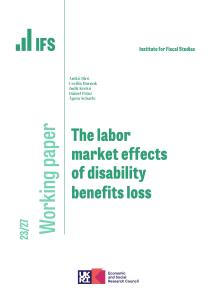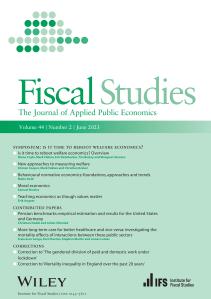Personal Independence Payment (PIP) is the main working age benefit paid to disabled people who may face additional costs of living, and has been gradually replacing Disability Living Allowance (DLA) since 2013. It is not means-tested and is paid regardless of whether an individual can, or indeed does, work. On average, recipients in 2016–17 got £99 a week.
In November 2016 two legal judgements (see here and also here) on the eligibility criteria for PIP went against the Department for Work and Pensions (DWP). In response, last month the Government laid regulations to ‘clarify’ the PIP criteria and, in effect, reverse the effects of the legal judgements. These came into force on March 16th. On Monday, the House of Lords will debate one motion to annul the regulations and a second to call for a review.
To understand these judgements, and the changes in the regulations, it is important to understand how PIP entitlements are determined. PIP payments are composed of either or both of a “daily living” component, paid if the individual needs assistance with any of a range of activities such as eating and washing, and a “mobility” component, paid if the individual needs help to travel. Both components may be paid at either a standard or an enhanced rate. When an individual applies for PIP, they are awarded points on the basis of the extent to which they cannot carry out 12 activities which are deemed to be important to everyday life (10 “daily living” activities and 2 “mobility activities”). The total number of points they get for daily living and mobility activities determines whether they get nothing for that component, the standard rate for that component or the enhanced rate.
The two Upper Tribunal judgments in November 2016 made decisions about how many points individuals with certain conditions should receive with respect to certain activities. The much more significant of these two decisions, in terms of the number of individuals affected and the implications for government spending, was in relation to Mobility Activity 1 – “Planning and following a journey”. It was decided that individuals who had to be accompanied on journeys in order that they didn’t suffer overwhelming psychological distress qualified for certain higher categories of points. The DWP equalities analysis estimated that the precedent set down by this judgement would see around 143,000 additional PIP awards (at an average weekly rate of £40) and around 21,000 individuals receive the enhanced rather than the standard PIP mobility rate (a gain of £36 per week). The affected individuals would predominantly be those with a range of psychiatric disorders.
In the absence of any action, DWP has estimated that spending following the tribunal judgements would be £910 million per year higher by 2021–22 and £3.7 billion higher over the period 2017–18 to 2021–22, than otherwise. These estimates do not take account of the fact that any of those brought onto PIP who were also receiving Employment and Support Allowance would also qualify for an additional premium in that benefit.
The Government has said that the tribunal judgments interpreted the PIP regulations in a way which it did not originally intend and on 23 February, laid regulations to amend the PIP regulations. The Office for Budget Responsibility forecasts that the new regulations will limit the fiscal impact of the tribunal judgments to £110 million in 2017–18 with no cost in any subsequent years.
A movement in the forecast level of annual spending on PIP of the magnitude of just under £1 billion is significant. But the bigger picture is that spending on disability benefits has consistently exceeded forecasts in recent years by billions of pounds. The figure shows real-terms spending on disability benefits, had spending grown at the rates forecast in recent Budgets. It also shows what the Budget 2017 forecast would have been in the absence of the Government’s new PIP regulations.
Note: Disability benefits spending includes Personal Independence Payment, Disability Living Allowance and Attendance Allowance.
Source: Authors’ calculations using DWP Benefit Expenditure and Caseload Tables and Equality Analysis: PIP assessment criteria.
When it was introduced, PIP was expected to lead to a 20% fall in both caseload and spending by 2015–16 compared to DLA. But this fall in caseload has not materialised. While Budget 2015 forecast that the caseload for disability benefits would fall by 6% between 2014-15 and 2017–18, it is now expected to rise by 3% over this period. This, along with a higher number of individuals receiving the enhanced PIP rates than originally expected, means that spending on disability benefits continues to grow strongly in real terms, contrary to previous forecasts. Total growth in real-terms spending on disability benefits over the 10 years to 2017–18 is now expected to be £5.9 billion, which is almost twice the £3.2 billion growth forecast as recently as March 2015.
Judgements about who should qualify for disability benefits and how much they should receive will depend on a large number of factors other than their fiscal cost. But it is worth keeping sight of the fact that we are spending more on disability benefits than we used to spend, and more than we expected to be spending.










